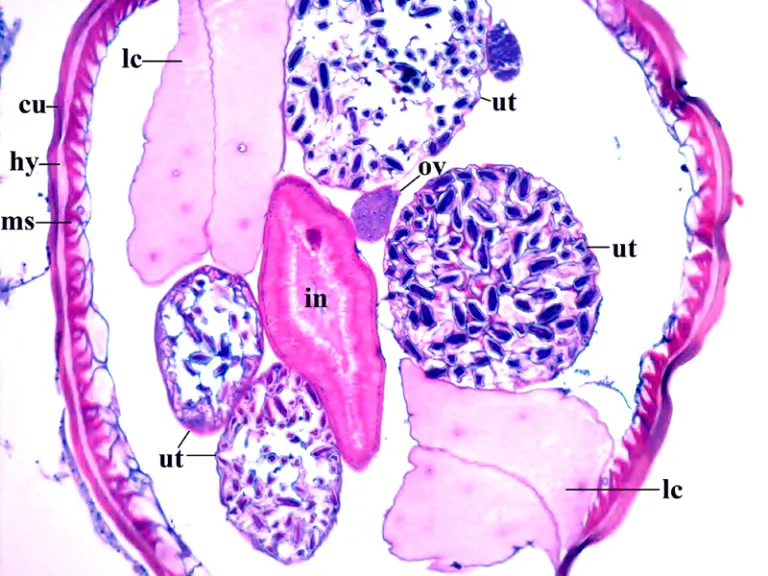Chronic eosinophilic leukemia in an African hedgehog (Atelerix albiventris)
DOI:
https://doi.org/10.24070/bjvp.1983-0246.009006Keywords:
wildlife diseases, neoplasia, eosinophilic leukemia, African hedgehog, Atelerix albiventrisAbstract
A 5-year-old African hedgehog (Atelerix albiventris) was presented to the veterinarian with history of anorexia and progressive weight loss. On clinical examination the mucous membranes were pale, and the skin exhibited extensive alopecia with crusting in all four limbs and tail. A large subcutaneous mass was palpated on the left lateral femur which subsequently was diagnosed histopathologically as a squamous cells carcinoma. The owner declined further tests and the patient returned home where it continued to deteriorate and finally died 90 days after initial presentation. The carcass was submitted for postmortem examination. Necropsy finding included an enlarged spleen with rounded borders and meaty pulp, hyperplastic bone marrow and multiple white foci in both kidneys. Tissues were submitted for cytology, histopathology and electron microscopy. Splenic cytology revealed a monomorphic population of granulocytes with cellular atypia which were most consistent with neoplastic eosinophils. Similar myeloid cells were also seen histologically in kidneys, liver, intestine, heart, skin and brain. The bone marrow was completely effaced with similar cellular infiltrates. Luna stain for eosinophils was positive in all tissues. Electron microscopy showed that neoplastic cells had granules and electron-lucent crystalloid characteristic of eosinophils. Based on these finding chronic eosinophilic leukemia was diagnosed, and to our knowledge, eosinophilic leukemia in hedgehogs is rarely reported in the literature.


